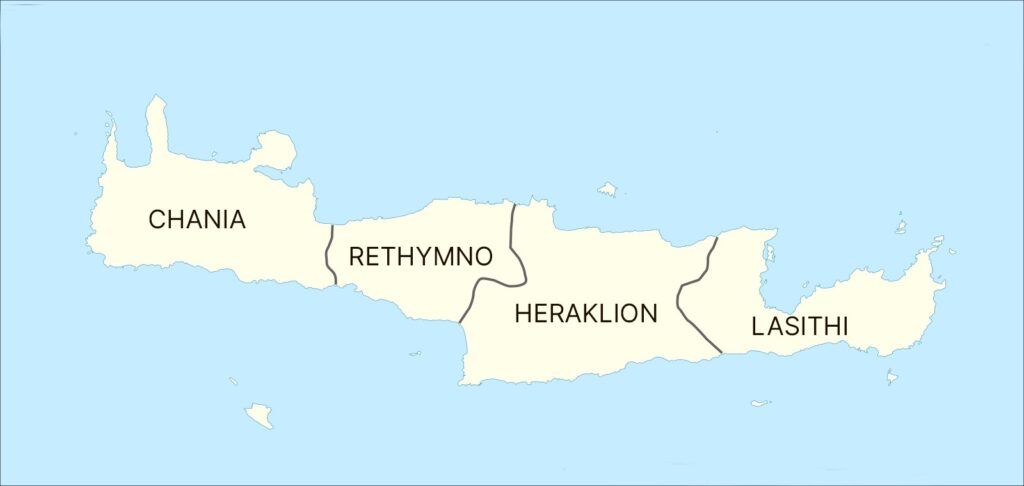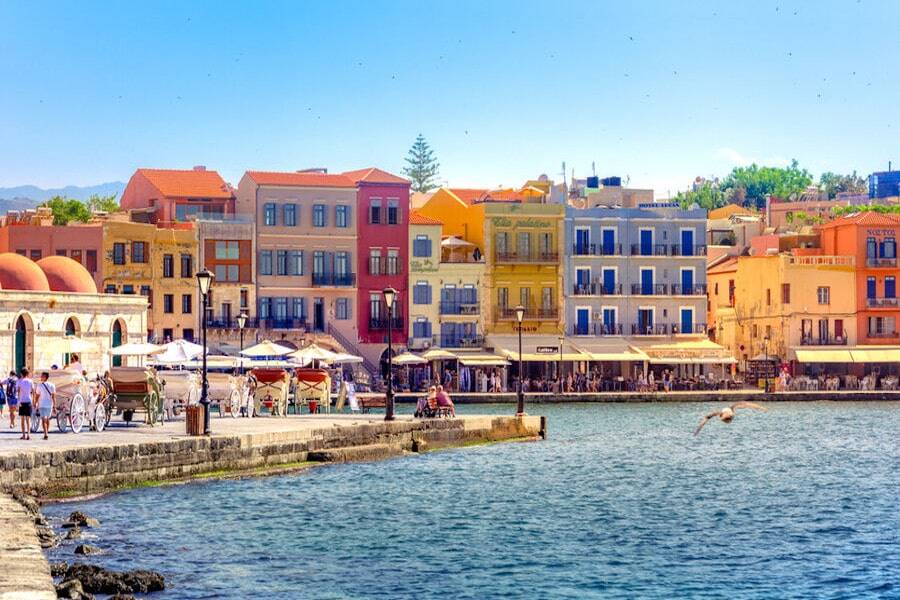The region of Chania, one of Greece’s most popular tourist destinations, draws visitors with its stunning natural beauty, rich history, and vibrant cultural traditions. Significant archaeological and historical sites like ancient Aptera, Kydonia, Falassarna, and the Incedin Castle evidence the region’s rich past.
Noteworthy landmarks include the Venetian port of Chania, the Egyptian Lighthouse, and the charming old town. Museums such as the Archaeological and Maritime Museums provide insights into Crete’s history.
Chania is also home to Byzantine churches and monasteries with distinctive architecture. The Cretan dialect and the tradition of mantinada (improvised rhyming couplets) enhance the region’s cultural identity, with notable figures like Eleftherios Venizelos and Mikis Theodorakis hailing from this area.
The natural environment in Chania is rich in biodiversity, featuring protected areas like the Samaria Gorge and Lake Kournas. Visitors can explore over 60 gorges and 1,500 caves, many accessible to the public.

Chania’s beaches, with more than 90 options, offer clear waters and well-organized facilities. The region’s diverse terrain and favourable climate make it ideal for alternative tourism and adventure, with trails that connect various historic sites. The hinterland of Chania provides an authentic experience, where traditional villages welcome visitors with Cretan hospitality and local cuisine.
Chania city is one of Crete’s most important ports and perhaps Greece’s most beautiful city. It flourished during Venetian rule (1252-1645), which left a deep mark and gave the city its contemporary form. Its port, with its characteristic Venetian lighthouse and its superb old town, afford it a unique atmosphere.
The city’s public market is an architectural gem among the most impressive in the Mediterranean.
The Ottomans conquered Chania in 1654, and it was only liberated and incorporated into modern Greece in 1913 when, along with the rest of Crete, it was united with Greece.
The Samaria Gorge is 40 kilometres from Chania and is among the largest canyons in Europe. It can be visited from the beginning of May to the 15th of October. It is a 16-kilometre hike on a footpath that descends next to cliffs and through thick forests. After a six to eight-hour walk, it ends at the seaside village of Aghia Roumeli on the coast of the Libyan Sea.
Gastronomy – Local products
The Cretan diet, an essential part of the island’s culture, is based on local, pure and simple raw materials such as virgin olive oil, vegetables, legumes, wild greens, meat, fish, and seafood. Some of the traditional dishes that are worth trying are kalitsounia with spinach, fennel or wild horta, sfakianopita, kreatotourta, snails (chochli) cooked in various recipes, boureki from Chania, gamopilafo, pasta with anthotiro and “ofto” or grilled goat, apaki or singlino, village sausages but also fresh fish and seafood. You will accompany them with wild horta, dakos and dairy products such as Cretan graviera, mizithra and staka. Do not miss xerotigana; of course, you will clink your glasses with tsikoudia, the drink-symbol of the Cretans. You will also find local wines and beers, dried herbs such as malotira (Sideritis Syriaca), the Cretan mountain tee, and melissohorto (Melissa officinalis) to make infusions, local beers and soft drinks.




